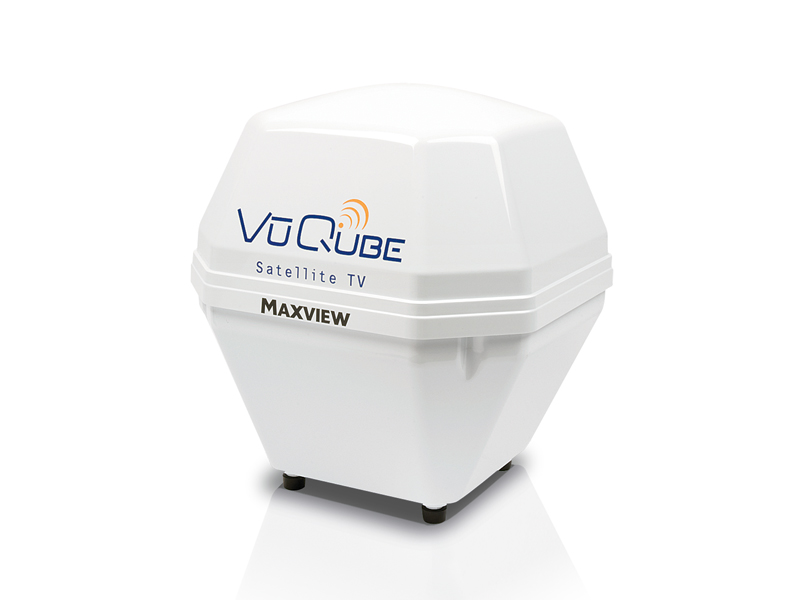TechRadar Verdict
Pros
- +
Well-made and compact
- +
Easy to set up
- +
Caters for PVR or two independent receivers
Cons
- -
Expensive
- -
Satellite memories not implemented
- -
Not DiSEqC-compatible
Why you can trust TechRadar
We've certainly come across some oddly shaped satellite antennas in the past, ranging from Squarials and 'squishes' to toroids and tubes. Pick of the latest crop is the portable VuQube, which is aimed at travellers who have no desire to escape from TV.
Although caravanners and mobile-home owners are bang on target, the unusual VuQube will also appeal to 'occasional' users, anyone who organises outdoor events for which TV reception is necessary, and boating enthusiasts (the vessel needs to be moored during use).
Conventional dish-planning regulations don't apply here, and so the VuQube should also be considered by anyone who lives in an area where conventional dishes are forbidden – either by the council or a landlord. As long as the unit has an unobstructed view of the satellite, it should work.
Weighing a mere 4.5kg, the US-made VuQube is a motorised aff air that resembles a miniaturised white dustbin. Within this distinctive plastic cabinet resides a 37cm Cassegrain-type prime-focus dish, fi tted with a twin universal LNB that will simultaneously feed two receivers or a twin-tuner PVR.
It's coupled to a specially designed mount with independent drives for azimuth and elevation. The latter is driven by some custom electronics under the control of a special two-way wireless handset with a range that's claimed to be 15m (DiSEqC, alas, doesn't work here and so the VuQube can't be controlled by a compatible receiver).
Fulfi lling its portable credentials, the VuQube is easy to install. A handle on the side of the case should face northwards. Crown the VuQube with a compass, and rotate its case until both handle and needle point North.
Elevation adjustment
After connecting the VuQube to a receiver – the 'main' LNB output is used for motor drive, via the receiver's power supply – the handset is used to aim the dish at the desired satellite.
This first involves adjusting elevation with the up/down buttons; the somewhat-limited manual lists European elevation-angles for Astra 1x and Astra 2x. A display on the handset indicates the current elevation angle. Using your receiver's signal strength meters, the azimuth is adjusted with the left-right buttons until a valid signal from the satellite is registered.
A segmented circle in the handset's display gives you an idea of the current position of the dish. The elevation can then be tweaked for optimum signal. With practice, it's possible to lock into a satellite within five minutes.
The advantage of this 'az-el' approach is that the dish is self-levelling, so it doesn't matter if the surface upon which the VuQube is placed isn't completely true. If you turn off your receiver the current dish position is held. Other buttons suggest that up to four satellite positions can be stored for recall – what a pity this useful feature hasn't been enabled.
Another disadvantage is that there's no compartment in the VuQube's body – on its base, for example – to stow away the handset when the system isn't being used. If the handset is lost or mislaid, a distinct possibility as far as travelling hardware is concerned, then the VuQube is next to useless. You'll have no option but to replace the handset, which is unlikely to be cheap.
Fair weather friend
Performance is fair, but we question Maxview's claims that its performance is equivalent to that of a 54cm off set dish.
While some Astra 2x transponders were brought in with a 90 per cent signal quality, others (notably lower-frequency ones) registered a mere 30 per cent. And that was on a sunny day; with the wet weather commonly associated with British camping holidays, you can expect reception of some channels to be lost.
We also successfully used the VuQube to receive Astra 1x and Hot Bird channels, but the same considerations apply. A Sky-type minidish, although not as elegant a portable solution, would be much cheaper and will deliver comparable results.
Follow TechRadar Reviews on Twitter: http://twitter.com/techradarreview

